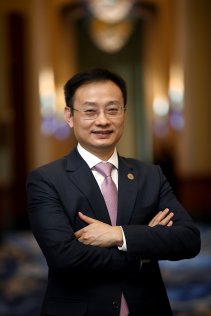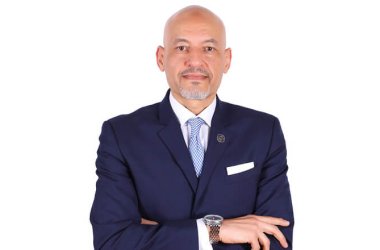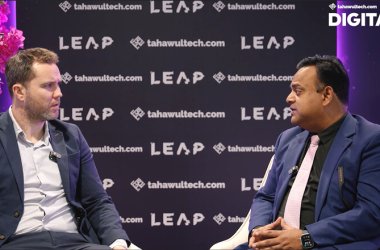
Despite a challenging year due to COVID and continued pressure from the US, Huawei maintained growth in 2021, as shown in the results. What was behind this momentum?
Huawei 2021 Annual Report revealed that the company had maintained stable operations throughout the past year. Huawei achieved USD 99.9 billion in revenue in 2021 and USD 17.8 billion in net profits, an increase of 75.9% year-on-year.
Huawei’s workforce, financial, and business operations all remain stable and can support the company’s future development. Huawei’s main business in ICT infrastructure has remained stable while new business segments like digital power and cloud grew rapidly and our ecosystem development efforts have entered the fast lane.
The solid performance despite a challenging operating landscape is the result of continued commitment to innovation. Huawei’s R&D expenditure reached about USD 22.4 billion in 2021, representing 22.4% of its total revenue and bringing its total R&D expenditure over the past ten years to over USD 132.5 billion.
This continuous investment in R&D saw Huawei rank second on the EU Industrial R&D Investment Scoreboard last year. Today, Huawei maintains one of the largest patent portfolios globally; by 2021, Huawei held more than 110,000 active patents across over 45,000 families.
Countries in the region were pioneers in adopting 5G, achieving rapid and successful 5G rollouts. As the technology matures, please discuss some rising use cases and how businesses can evolve new models based on 5G.
In 2021, Huawei’s global carrier business generated USD44.1 billion in revenue and helped carriers worldwide deploy leading 5G networks. Third-party test results have found that 5G networks built by Huawei for customers in 13 countries, including Saudi Arabia, Switzerland, Germany, Finland, the Netherlands and South Korea, provide the best user experience.
Huawei has signed more than 3,000 commercial contracts for industrial 5G applications.
Such 5G applications are currently seeing large-scale commercial use in manufacturing, mines, iron & steel plants, ports, and hospitals. In 2021, Huawei worked with more than 500 new industry solution partners whose products complement our capabilities, with whom we jointly released over 700 solutions, including more than 100 scenario-based 5GtoB solutions.
These solutions were deployed in more than 10,000 5GtoB projects in the enterprise market, enabling industry applications like intelligent iron & steel, intelligent coal mining, intelligent ports, intelligent cement, intelligent manufacturing, intelligent chemicals, and intelligent oil & gas. These applications have helped customers boost productivity and offer their employees a safer and more comfortable work environment.
Elaborate on the latest innovations in Huawei Cloud and how the platform continues to empower the region’s digital economy?
Huawei Cloud was designed to provide customers with stable, reliable, secure, and innovative cloud services. To accelerate digital transformation, Huawei Cloud is working to deliver Everything-as-a Service underpinned by three pillars – Infrastructure as a Service, Technology-as-a-Service and Expertise-as-a-Service.
Huawei has fully opened over 50 scenario-based cloud services and has provided over 8,000 solutions to customers.
Huawei Cloud is committed to growing with partners throughout the Middle East. Last year, for example, we announced investing $15 million in the Middle East Huawei Cloud Oasis program to assist 3,000 experts, support over 1,500 consulting and technical partners, and empower more than 100 SMEs to develop their cloud capabilities.
Our Huawei Cloud Spark program will also provide startups with access to financial and technical support, mentoring, and go-to-market encouragement. The purpose is to help startups focus on business development without worrying about the financial and marketing challenges.
At the recent LEAP conference in Riyadh, Huawei further announced plans to open a cloud region in Saudi Arabia, a message delivered by our global Rotating Chairman, reflecting the Kingdom’s importance to Huawei’s global business and the importance of cloud in the region.
With many regional countries announcing green initiatives, could you elaborate on how Huawei supports these new demands?
We are strong supporters of the Middle East region’s green ambitions and the strategies of countries like the UAE, Saudi Arabia, and others to move towards carbon neutrality. Many of our partners across the technology landscape also desire to participate in climate change action.
This movement involves innovating green, low-carbon networks and data centres while promoting clean energy development. Today, we are doing this through Huawei Digital Power, including many strategic projects in the Middle East.
Huawei Digital Power looks at five areas of business globally: Smart PV, data center facilities, mPower for electric vehicles, site power, and integrated energy solutions. Huawei Digital Power sees the Middle East region and the Gulf specifically as one of “strategic importance” to the company as it seeks to contribute to a low-carbon, smarter society powered by digital technologies.
While we will cooperate with businesses in all of the previously mentioned five domains in the GCC, I believe that Smart PV and data centre facilities are significant.
In Saudi Arabia, Huawei provides energy storage and PV solutions for the Red Sea Project, the world’s largest microgrid energy storage project. This project will see the construction of the world’s first city to be powered solely by PV with energy storage.
Moreover, we see an opportunity to support telecom carriers to optimise energy by building energy-efficient sites, networks, and operations. This helps them reduce their carbon footprint while lowering energy expenses to meet their cost reduction goals. This is the essence of our “More Bits, Less Watts” strategy.
Huawei’s highly popular talent development initiatives continue to empower the youth to explore careers in ICT. Please update us on the latest developments in these initiatives
When we launched Seeds for the Future in 2008, we immediately identified a real need to develop local ICT talent. Since then, Huawei has launched or sponsored multiple other talent development programs and competitions at the global, regional, and country levels, including scholarship programs, Huawei ICT Academy, Huawei Developers Training, Huawei Cloud Developer Institute, Women in Tech, and Technology for Education (e.g., DigiSchool, DigiTruck, and SmartBus).
We have already invested more than US$150 million into these programs as part of our commitment to local ICT talent development, and 1.54 million people from over 150 countries have benefited from them.
To date, Huawei has opened 152 Huawei ICT Academies in the Middle East alone. More than 15,000 students got Huawei Certifications, and over 76,000 students participated in Huawei’s annual ICT Competition. More than 3,000 students have engaged in its flagship program, Seeds For The Future.
In 2021, Huawei announced Seeds for the Future Program 2.0 with a commitment to invest US$150 million in digital talent development over the next five years. We expect this effort to benefit more than three million additional people, including hundreds of thousands in the Middle East.





